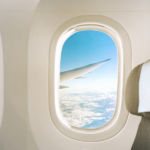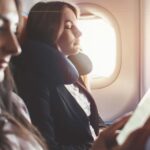The challenge of sleeping comfortably while flying economy class has become something of a universal struggle for travelers worldwide. With limited space, minimal recline capabilities, and the constant hum of aircraft engines, finding rest during air travel can seem like an insurmountable task. Yet, as airlines continue to pack more seats into economy cabins and long-haul flights become increasingly common, mastering the skill of in-flight sleep has never been more important.

A recent viral social media sensation has brought renewed attention to this age-old travel dilemma, showcasing various sleeping positions that passengers adopt in their quest for mid-air rest. The popularity of this content reflects just how relatable this challenge is for the average traveler. Travel experts and frequent flyers have long discussed and debated the most effective approaches to catching sleep while confined to an economy seat, with many developing their own unique techniques over years of trial and error.
This comprehensive guide examines nine distinct sleeping positions that economy passengers commonly use during flights, discussing the advantages and potential drawbacks of each approach. Whether you’re preparing for an upcoming journey or simply curious about how others manage to rest during air travel, understanding these different techniques might help improve your next flying experience.
Window Lean: The Coveted Corner Rest
Perhaps the most sought-after sleeping arrangement for economy travelers involves securing a window seat. This position allows passengers to lean against the aircraft wall, creating a stable surface that can support the head and upper body during sleep. Many travelers consider window seats premium real estate precisely because of this sleeping advantage.
The technique typically involves placing a pillow or folded clothing item between the head and the cabin wall to provide cushioning. Some experienced travelers bring inflatable or memory foam travel pillows specifically designed for this purpose. The position allows for relatively stable support that won’t be disrupted by aisle traffic or neighboring passengers needing to exit their seats.
However, even this advantageous position has its limitations. The curvature of aircraft walls doesn’t always align perfectly with human anatomy, potentially creating uncomfortable pressure points during extended use. Additionally, the temperature of the cabin wall can fluctuate significantly during flight, sometimes becoming uncomfortably cold at cruising altitude.
Despite these drawbacks, window seat sleeping remains among the most popular and effective methods for economy class rest. Passengers who prioritize sleep often select these seats during the booking process, even when they come with additional fees. For many frequent flyers, the prospect of even modestly improved sleep quality justifies any extra cost or inconvenience associated with securing a window position.
Tray Table Forward Fold: The Desktop Doze
When window seats aren’t available, many travelers resort to using the tray table as an improvised sleeping surface. This technique involves lowering the tray table, placing a pillow or cushioning material on top, and leaning forward to rest the head and upper body on this platform.
This position has gained popularity among travelers who find it impossible to sleep in an upright position but can’t recline their seats substantially. It mimics the familiar posture many people naturally adopt when dozing at a desk or table, which can make it feel intuitively comfortable for some passengers.
The primary advantage of this approach is that it doesn’t rely on seat recline capabilities, which are increasingly limited on many economy flights. It also creates a self-contained sleeping arrangement that doesn’t intrude on neighboring passengers’ space, an important consideration in the close quarters of economy cabins.
However, this position places significant pressure on the lower back and can restrict blood flow to the legs when maintained for extended periods. Many passengers report neck discomfort or stiffness after using this method, as it forces the spine into an unnatural forward curve. Additionally, this position becomes impractical during meal service or when the fasten seatbelt sign is illuminated, as most airlines require tray tables to be stowed during these times.
Despite these limitations, the tray table method remains popular for shorter naps and among passengers who have difficulty sleeping while sitting upright. Some travelers enhance this technique by using specially designed inflatable pillows that create a more ergonomic surface on the tray table.
Armrest Support: The Side Sleeper Solution
For those who naturally sleep on their sides, the armrest support position offers a compromise between upright sitting and full reclining. This technique involves placing a pillow against the armrest and leaning toward that side, creating an angled sleeping position.
The method works best when using the aisle-side armrest, as it offers more flexibility than the center armrest that’s often shared with another passenger. Some travelers adjust this position by slightly elevating the armrest, creating a higher platform that better aligns with their shoulder height.
This approach appeals to passengers who find it impossible to sleep while facing forward but don’t have access to window seats or empty adjacent seats. It creates a modestly stable platform that can support the head without requiring significant recline or forward bending.
The primary drawback involves potential disruption from aisle traffic, including service carts and other passengers moving throughout the cabin. Additionally, the limited width of standard armrests means that even with a pillow, the contact area between the head and support surface remains relatively small, potentially creating pressure points during extended use.
Some frequent flyers enhance this technique by using neck pillows with extended side supports or by fashioning makeshift extensions using clothing or blankets. While not ideal for long-term sleeping, this position can provide effective short rest periods for those who prefer side-sleeping positions.
Fetal Position: The Empty Seat Jackpot
When passengers are fortunate enough to have empty adjacent seats, many adopt a curled fetal position that allows them to lie horizontally across multiple seats. This arrangement represents the closest approximation to a normal sleeping position available in economy class without upgrading to premium cabins.
The technique typically involves raising the armrests between seats (when possible), placing pillows strategically for cushioning, and curling the legs to fit within the limited available space. Many travelers consider securing a row with empty seats the ultimate economy class victory, particularly on long-haul overnight flights.
This position allows for genuine horizontal rest, which physiologically supports more natural sleep cycles compared to upright or semi-reclined positions. It also removes pressure from the spine and lower back, areas that often become painful during extended periods of sitting.
However, the fetal position across seats remains elusive for most travelers, particularly on popular routes with high load factors. Airlines have become increasingly efficient at filling cabins, making empty adjacent seats a rare luxury. Additionally, even when this arrangement is possible, the limited width of economy seats means that taller passengers still face significant constraints.
Some strategic travelers attempt to increase their chances of securing this arrangement by selecting seats in less desirable areas of the aircraft or by using airline apps to monitor seat assignments and change their selection as departure approaches. While these tactics occasionally succeed, most passengers view the empty-seat fetal position as a matter of luck rather than planning.
Knee Hug: The Self-Comfort Curl
Some economy passengers adopt a modified sitting position that involves drawing their knees toward their chest and wrapping their arms around their legs. This compact arrangement creates a self-contained posture that some travelers find comforting, particularly those who naturally sleep in curled positions.
The knee hug position can be enhanced with a pillow placed between the knees and chest or behind the lower back for additional support. Some passengers also rest their head on their knees, creating a darkened environment that can facilitate sleep onset.
This technique appeals to travelers who find traditional upright sitting uncomfortable but lack the space for more elaborate sleeping arrangements. It creates a sense of security through self-enclosure and reduces some of the physical vulnerability that many people feel when sleeping in public spaces like aircraft cabins.
The primary limitations involve potential circulation issues from compressed leg positions and the fact that this posture may be physically impossible for passengers with certain body types or mobility limitations. Additionally, maintaining this position throughout sleep can be challenging, as natural movements during rest often cause the legs to extend.
Despite these drawbacks, the knee hug represents an adaptable technique that requires no special equipment or seat assignments. It can be particularly effective during shorter flight segments when brief naps rather than extended sleep are the goal.
Shared Support: The Travel Companion Arrangement
Passengers traveling with close friends or family members sometimes develop cooperative sleeping arrangements that leverage their relationship to create more comfortable conditions. One common approach involves one passenger resting their head on another’s shoulder or lap, creating a human pillow effect.
This technique works best when travelers know each other well enough to be comfortable with physical proximity and when armrests can be raised to eliminate barriers between seats. Some companion travelers coordinate their sleep schedules, taking turns providing support so that each person can rest during the journey.
The primary advantage involves creating a more natural sleeping platform than standard aircraft seats provide on their own. Human bodies offer warmth and natural cushioning that rigid aircraft components cannot match, potentially supporting deeper and more restful sleep.
However, this approach obviously requires mutual consent and comfort with physical proximity, limiting its applicability to travelers with established relationships. It also depends on compatible body sizes and sleeping preferences between the passengers involved. Additionally, both participants typically experience some degree of discomfort, whether from providing support or from adapting to an unfamiliar sleeping arrangement.
Some frequent traveling couples or families develop sophisticated versions of this technique over time, incorporating travel pillows and blankets to enhance comfort for both participants. While not suitable for all travelers, those with compatible companions often find this approach superior to individual sleeping attempts.
Pillow Embrace: The Security Sleeper
Some passengers adapt to economy constraints by hugging a pillow or similar soft object against their chest while attempting to sleep. This technique doesn’t dramatically alter the basic sitting position but creates a psychological comfort factor that some travelers find helpful for sleep onset.
The approach typically involves holding a pillow, rolled jacket, or dedicated travel cushion against the torso while leaning slightly forward or to one side. Some passengers rest their chin or cheek against the embraced object, creating additional support for the head.
This method appears to work through both physical and psychological mechanisms. Physically, the embraced object provides modest support for the arms and upper body, potentially reducing muscle tension during sleep attempts. Psychologically, the technique mimics comfort behaviors that many people naturally adopt during sleep, creating familiar sensory cues that can facilitate relaxation.
The limitations primarily involve the minimal physical support this technique provides compared to more elaborate sleeping positions. While it may help with falling asleep, it typically doesn’t address the fundamental ergonomic challenges of economy seating. Additionally, the effectiveness seems highly variable between individuals, working well for some travelers while providing little benefit to others.
Some companies now produce specialized “hug pillows” designed specifically for this purpose, featuring shapes and materials optimized for in-flight use. While scientific evidence for their effectiveness remains limited, many frequent flyers report subjective improvements in comfort when using these devices.
Upright Surrender: The No-Sleep Acceptance
Some experienced travelers eventually abandon sleep attempts altogether, instead developing strategies to remain comfortably awake throughout their flights. This approach involves embracing entertainment options, productive activities, or meditative practices rather than fighting against the challenging sleep environment.
Passengers adopting this technique often come prepared with extensive entertainment options, work materials, or reading content specifically selected for flight conditions. Some practice mindfulness techniques that create restful mental states without requiring actual sleep.
The primary advantage involves eliminating the frustration and discomfort that often accompanies failed sleep attempts. By consciously choosing wakefulness, travelers can avoid the cycle of unsuccessful sleep efforts that sometimes makes flights more unpleasant than necessary.
However, this approach becomes increasingly problematic on longer flights, particularly those crossing multiple time zones. Extended sleep deprivation can exacerbate jet lag and diminish travel experiences upon arrival. Even the most engaging activities eventually become tiresome during very long flight segments.
Some travelers adopt hybrid approaches, alternating between acceptance of wakefulness and strategic napping attempts when fatigue becomes overwhelming. This flexible mindset can reduce anxiety about sleep while still allowing for rest when conditions permit.
Multi-Method Approach: The Adaptive Sleeper
Perhaps the most effective approach for many frequent travelers involves employing multiple techniques adaptively throughout a flight. Rather than committing to a single sleeping position for the entire journey, these passengers shift between different methods as conditions change and comfort needs evolve.
This adaptive approach might begin with tray table leaning during initial cruise, shift to armrest support after meal service, incorporate brief periods of knee hugging when seeking positional relief, and conclude with window leaning during final descent. The transitions between positions help address the physical discomfort that often develops when maintaining any single posture for extended periods.
Successful multi-method sleepers typically come equipped with versatile travel accessories that can support various positions. Convertible pillows, lightweight blankets, and adjustable eye masks feature prominently in their travel kits. They also develop keen awareness of flight phases, strategically timing their position changes to align with natural breaks in the journey.
The primary challenge involves the disruption that position changes can create for both the traveler and surrounding passengers. Frequent movement in confined aircraft cabins inevitably creates some disturbance. Additionally, transitioning between positions often temporarily interrupts sleep, potentially reducing overall rest quality.
Despite these limitations, the adaptive approach represents perhaps the most realistic strategy for managing the fundamental constraints of economy class sleep. By acknowledging that no single position offers perfect comfort throughout a flight, these travelers work within the limitations rather than fighting against them.
Preparation Matters: Beyond Positioning
While sleeping positions represent the most visible aspect of in-flight rest strategies, experienced travelers emphasize that preparation begins long before boarding. Sleep experts recommend establishing consistent pre-flight routines that signal to the body that rest period is approaching, regardless of actual local time.
Hydration management plays a crucial role, with strategic water consumption balancing the need for moisture against the disruption of bathroom visits. Similarly, thoughtful meal timing and content selection can significantly impact sleep quality, with many frequent flyers developing specific pre-flight and onboard eating patterns.
Clothing choices also dramatically affect sleep potential, with layering strategies accommodating the temperature fluctuations common on long flights. Materials that provide warmth without bulk and fabrics that minimize wrinkles during prolonged sitting feature prominently in frequent traveler wardrobes.
The growing market for specialized travel sleep accessories reflects the universal nature of this challenge. From advanced neck pillows to compression socks, footrests to specialized eye masks, an entire industry has developed around addressing the difficulties of economy class sleep. While no product offers a complete solution, thoughtfully selected accessories can meaningfully improve comfort for many travelers.
Ultimately, successful in-flight sleep often combines physical positioning techniques with psychological adaptation strategies. Experienced travelers develop realistic expectations about sleep quality in economy conditions, allowing them to appreciate whatever rest they achieve rather than focusing on its limitations compared to normal sleeping environments.
With some airlines adding more seats while others experiment with innovative economy cabin designs, the challenge of in-flight sleep remains a defining aspect of the modern travel experience. By understanding and adapting these various techniques, travelers can improve their chances of arriving at their destinations rested and ready for whatever adventures await.




